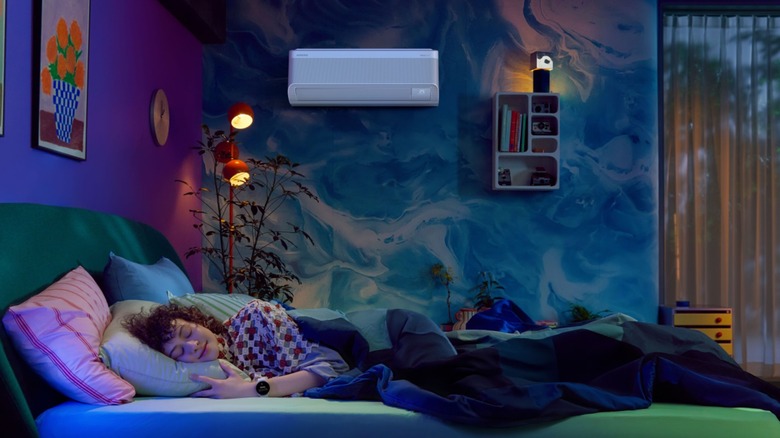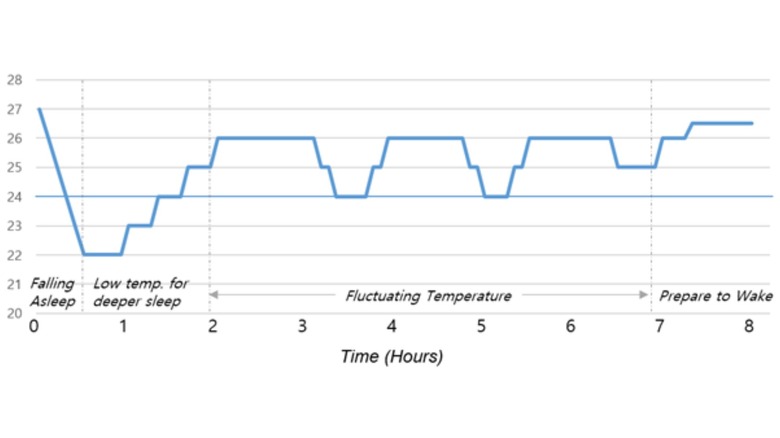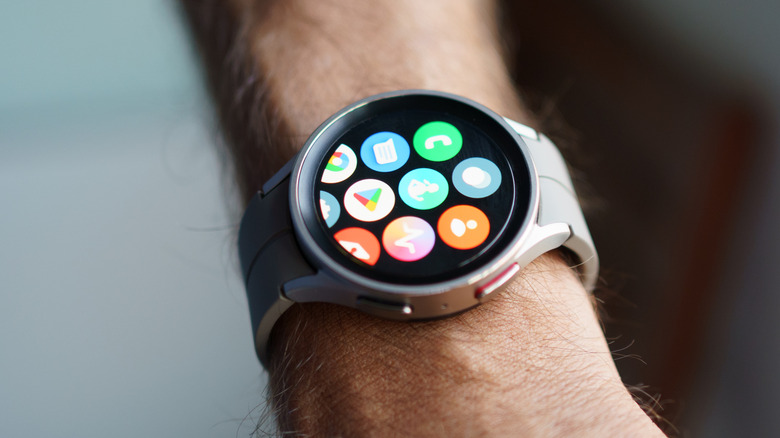Samsung's New Smart Home Tech Is Aimed At Making You Sleep Like A Dream
For over a decade, Samsung has sold air conditioners with a "good'sleep" feature. The overarching idea behind this built-in regulation tool is to ensure that the room doesn't get uncomfortably cool when users fall asleep. It makes automatic temperature and moisture adjustment based on the user's sleep patterns to ensure a peaceful shut-eye time without any interruptions. It's a thoughtful convenience, but Samsung is now adding yet another layer of integration that allows users to pair their wearable with the AC to accurately sync their nightly rest hours and enjoy a good sleep.
Samsung says Galaxy Watch and Galaxy Ring users can pair their wearable device with the companion smart home app to automatically enable good'sleep mode on their supported Samsung air conditioner on a daily basis. So far, this feature has worked based on an approximation, without knowing when exactly users have fallen asleep, and what stage of sleep they were currently going through.
Thanks to the biosensors fitted on the smartwatch and the smart ring, the paired system will be able to accurately estimate the sleep stage and accordingly adjust the temperature in the room. Before we dig into the technical and scientific rationale behind this cool feature, do keep in mind that it only supports the Galaxy Watch 4 and the models released after it. Additionally, you would also need a Galaxy S22 series phone or a later model. Moreover, you must be running the SmartThings, Samsung Wearable, or the Samsung Health app.
The science behind sleep and temperature
In its original format, where good'sleep is not tethered to a wearable device, it followed a rough three-stage format for making the AC function adjustments. In the first phase, called Falling Asleep Stage, the air conditioner's temperature was dropped for up to an hour by 1-2 degrees. In the second phase, dubbed Sound Sleep Stage, the temperature is raised by the same value as the body temperature also rises, lasting anywhere between two and seven hours. In the final Wake-up Stage, the temperature is raised by up to three degrees so that users can gradually acclimatize themselves before leaving the bed.
Now, Samsung's good'sleep system will follow in the footsteps of how wearable devices like the Apple Watch algorithmically calculate sleep stages and log all the data. In Samsung's case, there are three broad phases and five granular sleep stages, separated across waking, REM, and non-REM brackets. "Each stage of sleep includes variations in brain wave patterns, eye movements, and body temperature," says Samsung.
In each sleep stage, the body exhibits a unique level of skin temperature, eye movement, and brain wave activity. As a person passes through these stages on a cyclic basis at night, all the data is recorded to create a sleep graph in the companion app. This data also comes in handy in identifying whether a person is going through sleep apnea, often in combination with breathing patterns during sleep. Samsung intends to leverage this science to adjust the air conditioner's activity, offering the best sleeping experience.
How wearables and AC come together?
When the good sleep mode is working in tandem with the data transmitted by a Galaxy Ring or smartwatch, the air conditioner accordingly changes the temperature levels in the room. When a person falls asleep and enters the first stage, the temperature is lowered for a span of 90 minutes to make the person progress into the next deep sleep stage. As the body temperature and blood pressure increase when moving from one sleep stage to another, the ambient temperature is adjusted within a two-degree range.
On average, this happens thrice each night, and as the person inches closer to wake-up time, the temperature is slightly raised and the air conditioner releases a cool breeze. The driving principle behind the good sleep feature is that the body temperature is not constant during various sleep stages. If adjustments are not made accordingly to the room's temperature, there is a high chance that the sleep stage will be disrupted, and a person will wake up feeling either too cold, or too hot.
But when the air conditioner is aware of the exact sleep stage a person is going through, the room's temperature is adjusted according to the body's own temperature variation. Samsung says it has been working on the good sleep feature since 2015 in collaboration with the experts at Kyunghee University in order to develop the algorithms that will dynamically adjust the air conditioner's performance based on a person's sleep stage and progression.


